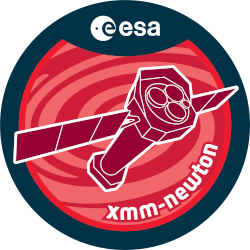

| Proposal ID | 092234 |
| Title | Characterizing Hot Jupiter Atmospheres with XMM-Newton |
| Download Data Associated to the proposal | https://nxsa.esac.esa.int/nxsa-sl/servlet/data-action-aio?obsno=0922340201 |
| DOI | https://doi.org/10.57780/esa-vrchrs2 |
| Principal Investigator, PI | Dr Lia Corrales |
| Abstract | NUV transits probe a variety of exoplanet phenomena including atmosphericescape, vertical distribution of aerosols, and interactions of the planetaryatmosphere with a stellar wind. XMM hosts one of the three most powerful NUVtelescopes and, with the longest orbital period, is best suited to monitoringexoplanet transits in the NUV. These transits can be up to four times deeperthan the optical transit and show tentative trends with planet equilibriumtemperature and mass loss rates. We propose to observe five transiting hotJupiters that will fill gaps in the range of exoplanet equilibrium temperaturesprobed to date. We will also use the EPIC cameras measure the X-ray luminosityof the exoplanet host stars, measuring the photoevaporative mass loss rates of each hot Jupiter. |
| Publications | No publications found for current proposal! |
| Instrument | EMOS1, EMOS2, EPN, OM, RGS1, RGS2 |
| Temporal Coverage | 2024-02-10T00:13:02Z/2024-02-14T21:34:00Z |
| Version | 21.23_20231215_1101 |
| Mission Description | The European Space Agencys (ESA) X-ray Multi-Mirror Mission (XMM-Newton) was launched by an Ariane 504 on December 10th 1999. XMM-Newton is ESAs second cornerstone of the Horizon 2000 Science Programme. It carries 3 high throughput X-ray telescopes with an unprecedented effective area, and an optical monitor, the first flown on a X-ray observatory. The large collecting area and ability to make long uninterrupted exposures provide highly sensitive observations. Since Earths atmosphere blocks out all X-rays, only a telescope in space can detect and study celestial X-ray sources. The XMM-Newton mission is helping scientists to solve a number of cosmic mysteries, ranging from the enigmatic black holes to the origins of the Universe itself. Observing time on XMM-Newton is being made available to the scientific community, applying for observational periods on a competitive basis. |
| Creator Contact | https://www.cosmos.esa.int/web/xmm-newton/xmm-newton-helpdesk |
| Date Published | 2025-03-13T00:00:00Z |
| Last Update | 2025-08-04 |
| Keywords | XMM-Newton, OM, RGS, EPIC, X-ray, Multi-Mirror, SAS |
| Publisher And Registrant | European Space Agency |
| Credit Guidelines | European Space Agency, Dr Lia Corrales, 2025, 'Characterizing Hot Jupiter Atmospheres with XMM-Newton', 21.23_20231215_1101, European Space Agency, https://doi.org/10.57780/esa-vrchrs2 |